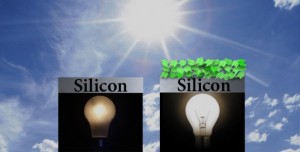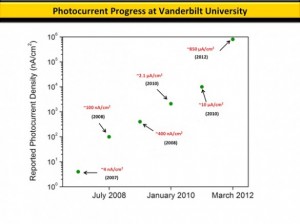Baba Brinkman is in the words of his eponymous website’s homepage,
Baba Brinkman is a Canadian rap artist, writer, actor, and tree planter. He is best known for his award-winning hip-hop theatre shows, including The Rap Guide to Evolution and The Canterbury Tales Remixed, which interpret the works of Darwin and Chaucer for a modern audience.
Originally from British Columbia and now living in New York City, he has brought his Rap Guide to Evolution which has been an off-Broadway show, a festival performance, and a DVD project to Vancouver. The last time he performed this show, which morphs as new information is received and as it is adapted for different media and performance types, to Vancouver was in 2011 (my Feb. 17, 2011 posting features a pre-show interview he gave),. This time he’s at Vancouver’s East Cultural Centre, (The Cultch) from Oct. 29, – November 10, 2013 (tickets here).
Baba has very kindly (especially since the show just opened a few days ago) given me a second interview. Without more ado, here’s the interview,
- Could you describe the full theatrical version of the Rap Guide to Evolution that played in New York? And is this what you’ve brought to Vancouver or has it been adapted either due to cost and/or venue and/or geographic location?
The show running in Vancouver is the full off-Broadway production, which includes music and live turntablism by Jamie Simmonds, visual projections by Wendall Harrington and lighting design by Jason Boyd. All of these production elements were added in 2011 specifically for the New York run, and they create a full immersion experience with lights and sounds and visuals and words all weaving together to tell the story of Darwin’s intellectual impact on the modern world.
- In Adrian Mack’s Oct. 23, 2013 piece in the Georgia Straight) newspaper, you talked about karma, Vancouverites’ belief in it, and the science of it. How did you come to a scientific understanding of karma and could you explain what you mean by ‘cheater detection’ and ‘evolved deterrents to free-riding behaviour’?
Karma is *often summarized as “what goes around comes around” and for most people it’s a belief that the universe is somehow keeping score, rewarding goodness and punishing badness. The dark side of the widespread belief in karma, in Vancouver and elsewhere, is that it could just as accurately be summarized as “whatever happens to you, good or bad, you deserve it” which doesn’t sit right with most people when they think it through. We constantly see people around us being unjustly rewarded for bad behaviour and punished for good behaviour, and we see a lot of randomness too. Not many of us would tell a pedestrian who was hit by a drunk driver: “that’s karma”, but if you give a homeless person a dollar and later find out that you’ve won a big prize in a raffle draw *you might think it’s karma. Hence, we usually only invoke the concept of karma when we encounter seemingly random events that appear to repay like with like.
The scientific view is that our minds misattribute causality to these kinds of random events, but we do it for a good reason. Humans are social primates, and social groups share the mutual benefits of cooperative efforts, but those benefits are constantly undermined by individuals who claim the rewards without paying the cooperative costs, ie cheaters and free-riders. Evolution will favour free-riding behaviour unless there are mechanisms to punish or suppress it, but punishment itself is costly, so there are a whole series of obstacles to evolving cooperation. One way to overcome these obstacles is with psychological mechanisms for “cheater detection” (seeking and identifying non-cooperators) and “altruistic punishment” (enforcing costs on them through reputation-damage, ostracism, loss of liberty, etc), both of which humans have been experimentally shown to have in spades. We care about who’s a fraud, a thief, and a cheater, and we want to see them pay for it. Denouncing and locking up Bernie Madoff feels good.
Hence, the concept of karma can be redeemed as a social as opposed to metaphysical phenomenon. The reason we feel like the universe adheres to the principle of “what goes around comes around” is because we are evolved to pursue that model through our social interactions, so we project it onto the physical world. The universe doesn’t enforce good behaviour, but your peers certainly do. If you doubt it, try ripping them off and see what happens.
- I see you were an artist-in-residence at the US National Institute for Mathematical and Biological Synthesis (NIMBioS) which is located at the University of Tennessee. Could you describe the experience especially in light of the fact that Tennessee is the state where the Scopes trial took place? (The trial is famous for bringing two of the US’s best known lawyers of the 1920s [William Jennings Bryan and Clarence Darrow] to argue whether or not evolution was scientific and should be taught in schools.)
I was expecting the Tennessee residency to be a lot more controversial, but in fact most of it was spent interacting with post-docs and grad students, learning about their research, going to lectures, and going to live music events at local bars. Major evolution vs creationism showdowns reminiscent of Scopes did not feature prominently in my time there, but in retrospect that isn’t surprising since I was a guest of a national scientific research centre and was situated on a university campus. The one exception to this general tranquility was my performance at Union County High School, which generated some controversy, summarized in my “Tennessee Monkey Trials” blog. I thought I was there to fight a culture war, but mostly I just drank local craft beer (and moonshine) and listened to live bluegrass music. *The end result was The Infomatic EP produced by Jamie Simmonds, who was in Tennessee with me for most of the residency.”*
- How have you and/or your work changed since you embarked on rapping science?
The biggest change is that I have come to identify as a skeptic, atheist, and philosophical naturalist, whereas before I would have called myself agnostic or spiritual. I was never religious before, but I was sympathetic to the idea of a nebulous spiritual “force” at work in the world. However, the more I read about evolution and psychology and the scientific method, the less seriously I was able to take supernatural or miraculous explanations for anything at all. Now I write rationalist anthems like “Naturalizm” and “Off That“, which are very different in tone than the music I was making six years ago.
- Where are you off to after this?
My next tour is the Norway Hip-hop Festival in February, and then a big tour of Australia in May/June, including the Sydney Opera House. In the meantime, my wife is pregnant with our first baby, due in late November, so I’m going to spend the winter learning to be a father, which is pretty exciting. Darwin would be proud.
- Is there anything you’d like to add?
I hope your readers will come to the show, if they are able. It runs until November 10th in Vancouver. Or, if they can’t make it, download the album and bump it in your headphones. Scientific literacy never sounded so good!
Baba, I very much appreciate the interview and the gift of your precious time writing this up just after you’ve opened your show here in Vancouver. As well, congratulations to you and your wife!
Also, thank you for that explanation of karma and science and, especially, for this bit, “The dark side of the widespread belief in karma, in Vancouver and elsewhere, is that it could just as accurately be summarized as “whatever happens to you, good or bad, you deserve it” which doesn’t sit right with most people when they think it through. We constantly see people around us being unjustly rewarded for bad behaviour and punished for good behaviour, and we see a lot of randomness too. …” Many times I’ve lovely well-meaning individuals do damage with advice that includes blame via ‘karma’. Thank you for being much more articulate about it than I’ve been.
As for anyone who likes to see reviews, the only one I could find is from Colin Thomas who in an Oct. 30, 2013 review for the Georgia Straight which was further elucidated in a Nov. 1, 2013 posting on his eponymous blog, had issues not with the performance (“Smart writer. Handsome production. But no. Just no. ” [from the Oct. 30, 2012 review]) but the content and the politics regarding rap and gender, in particular. I gather Thomas found the show thought-provoking.
* Two corrections made: ‘ofter’ to ‘often’ and ‘raffle and you might’ to ‘raffle you might’ in the response to the Karma question and one sentence added to the end of the Tennessee question on Nov.4, 2013.

